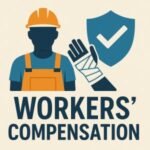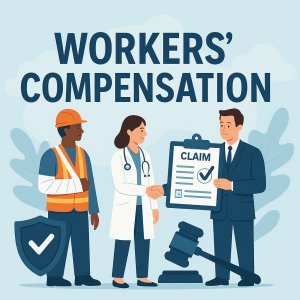in today’s fast-paced industrial and commercial environments, ensuring workplace safety is more than a regulatory requirement-its a strategic imperative. Safety audits serve as a critical tool for organizations aiming to proactively identify and mitigate hidden hazards before thay escalate into costly workers’ compensation claims.By systematically examining operational processes, equipment, and employee practices, these audits reveal vulnerabilities that might otherwise go unnoticed, helping companies maintain compliance, protect their workforce, and reduce financial liabilities. This article explores the essential role of safety audits in uncovering risks early and fostering a culture of prevention that safeguards both employees and organizational assets.
Table of Contents
Importance of Proactive Safety Audits in Risk Management
Engaging in regular, proactive safety audits is crucial for identifying and mitigating potential hazards before they escalate into costly incidents. These audits serve as a systematic approach to uncover hidden risks that ofen go unnoticed during daily operations.By addressing vulnerabilities early, organizations not only protect their workforce but also avoid significant financial repercussions associated with workers’ compensation claims and legal liabilities. Furthermore,proactive audits demonstrate a commitment to workplace safety,fostering a culture where employees feel valued and secure.
Key benefits of proactive safety audits include:
- Early identification of non-compliance and unsafe conditions
- Improved risk control strategies tailored to specific workplace environments
- Reduction in injury rates and associated downtime
- Enhanced employee morale through greater safety awareness
- Data-driven insights that inform safety training and policy updates
| Audit Focus Area | Common Findings | Preventative Actions |
|---|
| Equipment Safety | Improper guards, worn parts | Install guards, schedule maintenance |
| Worksite Hygiene | Spills, cluttered walkways | Regular cleaning, clear signage |
| Training & Compliance | Missing certifications | Conduct refresher courses |
Identifying Common Workplace Hazards Through Comprehensive inspections
Thorough inspections serve as the cornerstone of proactive workplace safety management, enabling organizations to uncover risks that are not instantly obvious. By employing comprehensive checklists and leveraging advanced tools such as thermal imaging cameras and gas detectors, safety teams can systematically evaluate every area of operation-from machinery to employee behavior. Essential focus areas include electrical hazards, slip and trip risks, and improper use of personal protective equipment (PPE). Regular walkthroughs and employee feedback loops increase the breadth of hazard identification, ensuring that even subtle issues are caught early.
- Structural Integrity: Inspect floors, stairways, and guardrails for weaknesses or damage that may lead to falls.
- Ergonomics: Evaluate workstation setups and repetitive motion risks that could cause musculoskeletal disorders.
- Chemical Exposure: Check storage, labeling, and ventilation to prevent harmful exposure incidents.
- Fire Safety: Verify extinguishers, exits, and alarm systems are fully operational and compliant with standards.
| Hazard Category | Common Indicators | Recommended Action |
|---|
| Electrical | Exposed wiring, overloaded outlets | Immediate repair, enforce lockout/tagout procedures |
| Physical | Uneven flooring, cluttered walkways | Regular housekeeping, install anti-slip mats |
| Chemical | Unlabeled containers, poor ventilation | Proper labeling, upgrade ventilation systems |
Implementing Effective audit Protocols to mitigate Potential Claims
To effectively minimize workplace incidents, it is indeed crucial to develop comprehensive audit protocols that do more than check compliance-they must identify underlying risk factors before accidents happen. Start by integrating routine safety inspections with detailed hazard assessments,focusing on both common and overlooked risks. Emphasize the involvement of employees at all levels,as their direct experience can reveal vulnerabilities that standard audits might miss. Establish clear criteria for documenting findings, prioritizing risks based on severity and likelihood, and implementing corrective actions promptly to close any safety gaps.
Successful audit protocols hinge on structured processes supported by precise data collection and analysis. Utilize tools such as checklists, digital reporting, and trend tracking to maintain consistency and accountability. Consider the following essential elements when designing your audit framework:
- Clear Objectives: Define what hazards the audit targets and what outcomes are expected.
- Regular Scheduling: Ensure audits occur frequently enough to catch evolving risks.
- Qualified Auditors: Assign personnel trained in safety standards and industry best practices.
- Comprehensive Reporting: Create reports that are detailed yet accessible, highlighting actionable insights.
- Follow-up Mechanisms: Implement systems to verify remediation effectiveness over time.
| Audit Phase | Focus Area | Outcome |
|---|
| Preparation | Review Safety Policies | Identify gaps in documentation |
| Inspection | worksite Walkthrough | Spot physical and procedural hazards |
| Analysis | Data Evaluation | Prioritize risks by severity |
| Action | corrective measures | Mitigate identified hazards |
| verification | Follow-Up Audit | Confirm hazard elimination |
Leveraging Audit findings to Enhance Safety Culture and Compliance
Effectively utilizing audit findings goes beyond merely identifying non-compliance or safety gaps; it is a strategic prospect to cultivate a proactive safety culture that empowers employees at every level. By transparently communicating audit results and involving teams in collaborative problem-solving, organizations foster an surroundings of accountability and continuous enhancement. This participative approach not only enhances worker engagement but also ensures that corrective measures are pragmatic and sustainable, thereby driving long-term compliance and risk mitigation.
to translate audit insights into measurable safety advancements, management should prioritize the following actions:
- Develop targeted training programs addressing identified weaknesses, ensuring all personnel understand their role in hazard prevention.
- Regularly update safety policies based on audit data to reflect evolving workplace realities and regulatory changes.
- Implement follow-up audits with clear benchmarks to assess progress on corrective actions.
- Recognize and reward proactive safety behavior, reinforcing a culture of vigilance and ownership.
| Audit Finding | Action Taken | Expected Outcome |
|---|
| Insufficient PPE usage | Mandatory refresher training and PPE audits | Increased compliance and reduced injury risk |
| Obstructed emergency exits | Reorganization of workspace and signage update | Improved evacuation efficiency |
| Inadequate machine guarding | Installation of new safety guards and protocols | Minimized equipment-related injuries |
Q&A
Q&A: Safety Audits - Finding hidden Hazards Before Workers’ Comp Claims Occur
Q1: What is a safety audit and why is it important for businesses?
A safety audit is a systematic, thorough review of workplace practices, conditions, and safety protocols designed to identify potential hazards before they result in accidents or injuries. It is important because it helps organizations proactively manage risks, ensuring compliance with regulatory requirements and reducing the likelihood of costly workers’ compensation claims.
Q2: How do safety audits help prevent workers’ compensation claims?
By uncovering hidden hazards and unsafe practices early, safety audits enable businesses to implement corrective actions before incidents occur. This proactive approach minimizes the occurrence of workplace injuries,thereby decreasing the frequency and severity of workers’ compensation claims.
Q3: Who should conduct a safety audit within an organization?
safety audits can be conducted by internal safety professionals, such as a company’s safety manager or designated safety team, or by external specialists with expertise in occupational health and safety.The key is that auditors must possess thorough knowlege of industry standards and regulatory compliance to identify relevant risks effectively.
Q4: What are some common hidden hazards that safety audits typically uncover?
Common hidden hazards may include improper machine guarding, inadequate personal protective equipment (PPE) usage, poor ergonomics, insufficient training, blocked emergency exits, and non-compliance with safety signage or lockout/tagout procedures. These conditions, if left unaddressed, pose significant risk to employee health and safety.
Q5: How often should safety audits be conducted?
The frequency of safety audits depends on the industry, the complexity of operations, past incident history, and regulatory requirements. Generally,businesses should conduct formal safety audits at least annually,with more frequent inspections in high-risk environments or after any major operational changes.
Q6: What steps should a business take after identifying hazards during a safety audit?
Once hazards are identified, businesses must prioritize risks based on severity and likelihood, develop corrective action plans, assign responsibility for implementation, and set timelines for remediation. Continuous follow-up and documentation ensure that corrective measures are effective and sustained over time.
Q7: How does a strong safety audit program impact overall business performance?
A robust safety audit program fosters a culture of safety,reduces downtime caused by accidents,lowers insurance premiums,and enhances employee morale and productivity. Additionally, it strengthens a company’s reputation with clients, regulators, and insurers as a responsible and compliant employer.
Q8: Can technology improve the effectiveness of safety audits?
Yes, technology such as digital inspection tools, mobile safety apps, and data analytics can streamline the audit process, improve accuracy, and provide real-time reporting. These tools help safety professionals track hazards more efficiently, monitor corrective actions, and identify trends to prevent future risks.
This Q&A serves as a foundational overview of how effective safety audits are critical in uncovering hidden workplace hazards and preventing costly workers’ compensation claims.
Key Takeaways
safety audits serve as a crucial proactive measure in identifying and mitigating hidden hazards before they escalate into costly workers’ compensation claims. By systematically evaluating workplace environments, organizations not only enhance employee well-being but also safeguard operational continuity and financial stability.Investing in regular, thorough safety audits is an essential strategy for any business committed to fostering a culture of prevention and accountability. Ultimately, this approach not only minimizes risk but also strengthens organizational resilience in today’s competitive landscape.
“This content was generated with the assistance of artificial intelligence. While we strive for accuracy, AI-generated content may not always reflect the most current information or professional advice. Users are encouraged to independently verify critical information and, where appropriate, consult with qualified professionals, lawyers, state statutes and regulations & NCCI rules & manuals before making decisions based on this content.










